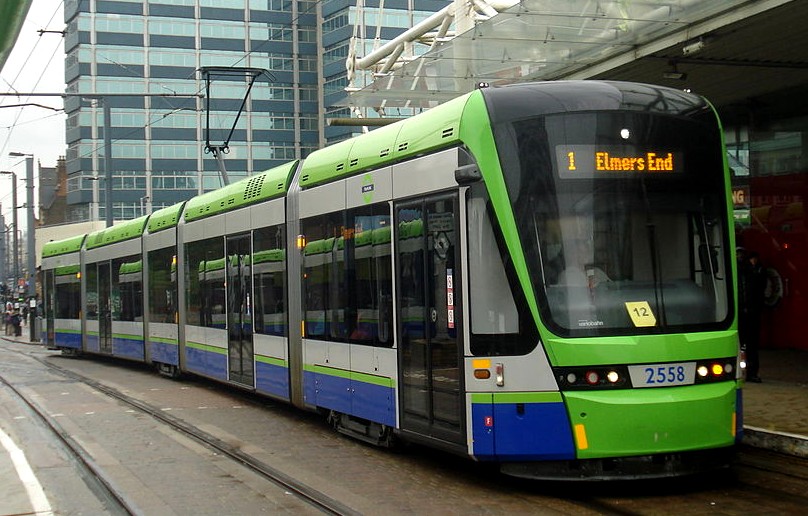
Trams in London are going to have automatic braking systems, the first such system in the world to be fully operational. The system is designed to lower the chance of accidents, and was designed after a serious incident in November 2016 where a tram overturned after the driver fell asleep.
The system is made by Engineering Support Group (ESG). The system automatically brings the moving tram to a controlled stop if it exceeds the permissible speed, which depends on the route and location of the tram. The system will initially be fitted in vehicles riding in designated high-risk areas, and subsequently in every tram on all routes in the network. The system can be configured to bring the tram to a full stop, or to bring down speed to just under the limit.
The automatic braking system will be combines with a driver protection device, which monitors driver fatigue, and is also able to stop the tram if it detects a tired driver. This system works in the same way as many such similar devices in new road cars. A final new safety system is an emergency lighting system, that operates independently from the tram’s main battery.
The current London tram network, London Tramlink, is relatively new. It was established in 2000 and operates 28 kilometers of track with 39 stops, mostly in South London.
London Tramlink operates 23 Bombardier CR4000 Flixity Swift rail vehicles, manufactured by Bombardier Transportation in Vienna, Austria. Each tram has a capacity of 70 seated and 138 standing. Full length is 30.1 meters and width is 3.6 meters, with an empty weight of 36.6 tons. Power comes from a 750 volt DC overhead system, and the tram runs on four electric motors with 160 hp each.

Maximum speed is 80 kilometers per hour. Acceleration is swift: 1.3 meter 0r 4.7 km/h per second. The trams standard equipped with a integral traction braking controller with deadman’s handle. This is a fail-safe system that requires the tram’s driver to push a controller continuously to keep the tram in drive, while controlling speed with another device. In theory, as soon as the driver becomes incapacitated and lets go of the switch, the tram will automatically come to a stop.
This system however does not guard against a situation where a fatigued driver passes out, and somehow keeps his hand on the controller, enabling the tram to keep going at full speed, which is what happened in the 2016 London accident. The new automatic braking system is designed to prevent this from happening ever again. The world is a bit safer once more, thanks to advanced braking technology!